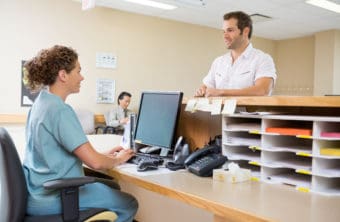5 Ways Pharmacy Techs Can Show Empathy
Empathy is neither sympathy nor compassion. It is also not feeling sorry for a patient. Being empathetic means listening to the patient’s words, feelings, and gestures, and letting the patient know that you are really hearing what he or she is saying. Empathy can create better relationships with the patients.
Here are five ways pharmacy technicians can show empathy.
- Show respect to receive respect.
The key is respecting patients’ beliefs, perspectives, opinions, and feelings. Showing respect for patients can bolster their respect for you in return. Some ways to show respect include introducing yourself, explaining your role, measuring the patient’s comfort before getting started (“Is now a good time for you?”), and letting patients know they have been heard (“Let me see if I have the story straight”).
- Encourage patients to express themselves.
Using phrases like “Tell me more” or “It’s okay to be upset” can be helpful for better understanding a patient’s need and also develop relationship with the patient. Giving patients encouragement can also make them feel more comfortable opening up or asking questions.
- Put yourself in the patient’s shoes.
Take a step back and consider what they may be going through. Did they just receive devastating news from the doctor? Are they caring for a loved one who has a terminal disease? Often times, this is what our patients are going through. By putting yourself in their shoes, you in turn show empathy.
- Recognize and address patients’ fears.
Pharmacy techs are often the first point of contact for a patient. By listening and recognizing the patients’ fears, the pharmacy tech is able to show empathy and create that relationship with the patient.
- Use interchangeable and additive responses.
Interchangeable responses are re-statements of the patient’s words, which can show understanding and empathy. When using interchangeable responses and additive statements to patients, it gives the patient the opportunity to either give confirmation or correct the pharmacy technician, both of which will provide a better picture of what the patient is going through.









